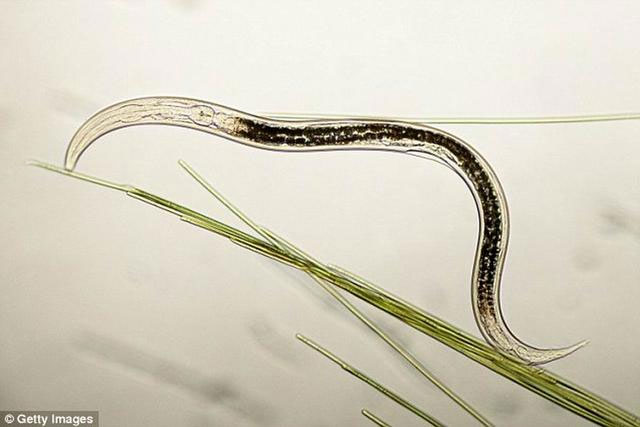Worms perceive light 50 times better than humans
Can animals "taste" light? Through research, it has been found that worms' cells can detect light rays 50 times better than human eyes.
Normal roundworms without eyes appear a transcendent ability, which is "tasting" light . A new type of cell has been discovered in the organism that senses this organism's taste, that is, it can capture light 50 times more effectively than the human eye. Scientists say the strange properties of receptors can be used in a range of applications, including creating more effective sunshades.

Worms have no eyes but can feel light.(Photo: Getty Images).
This finding was discovered by an international team of scientists, led by the University of Michigan. They say their discovery is just one of three light-stimulating cells , found in animals so far. The team named the new receptor in LITE-1 roundworms and roundworms .
Professor Shawn Xu, a well-known research author, said: "LITE-1 actually comes from a whole body of taste receptors, first discovered in insects. This is not the same as the mammalian receptor organ . " Previous researchers have discovered that, although there are no eyes, worms will still move toward the light. This shows that they can sense stimuli.
New research by the science team goes a step further to confirm: LITE-1 absorbs light rather than simply feeling it. Professor Shawn Xu said: "The photoreceptor cells convert light into signals that the body can use. LITE-1 is not normal in that it is extremely effective in absorbing UV rays. -A and UV-B, which is 10–100 times better than the previous two types of cells found in the animal kingdom: ospin and cryptocromes ".
"The next step in research is that we will work to understand why worms have these wonderful properties. Scientists can use similar technologies to find receptor cells. like new light in terms of tradition, "added Shawn Xu.

The sunshade made of LITE-1 can absorb dangerous rays from the Sun.(Photo: Getty Images).
Researchers believe that their findings may prove useful in many ways. For example, on prints published by Cell, they said it is possible to develop LITE-1 into sunshades to absorb harmful rays before they can reach the human skin. In addition, LITE-1 can be used to "feed" light that is vulnerable to new cell types.
Light-stimulating cells in animals often have two components: the basic protein and the chromophore absorb light. When these two components are broken (metamorphosed), the chromophore group retains its functions. But this is not the case of LITE-1. LITE-1 completely disables the ability to absorb light if the other two components are broken. This indicates that LITE-1 is a different model from the previously discovered models.
Looking deeply into the differences, the researchers determined that, with basic proteins, amino acids, tryptophan in two places are important for its functions. The researchers transformed the light-free sensitive protein into the same group - GUR3 to have tryptophan added to the same two places. This causes the protein to react strongly to UV rays.
- The mystery of the worms 'living worms', though killed hundreds of times
- Discovered species with auditory hearing in nature
- These are the worms that are making the whole world excited. The reason is ...
- Ancient worms eat animal bones
- Worms 'exploration' space
- Chimpanzee 'cunning'
- Detecting weird zombie worms
- Discovering beautiful worms that know how to spray glue in Vietnam
- His armored worms monsters spike
- The sight of worms eating algae magnifies 250 times
- The French scientists were stunned to realize that the nation was being invaded by giant worms
- Close-up of the footless worms 'nonsense' eating maternal meat
 Animal 'suffering' after hibernation
Animal 'suffering' after hibernation Why do goats climb well?
Why do goats climb well? Scientists were surprised to see chimpanzees eating turtles
Scientists were surprised to see chimpanzees eating turtles Giant catfish died deadly due to drought in Thailand
Giant catfish died deadly due to drought in Thailand 9 billion light years away, 'space hole' facing Earthlings
9 billion light years away, 'space hole' facing Earthlings  Simulating Einstein's formula, scientists prove that light can create matter
Simulating Einstein's formula, scientists prove that light can create matter  How do animals see the world?
How do animals see the world?  How do real life invisibility cloaks work?
How do real life invisibility cloaks work?  Double quasars travel through 10 billion years to Earth, about to merge into a monster
Double quasars travel through 10 billion years to Earth, about to merge into a monster  What happens after humans travel faster than the speed of light?
What happens after humans travel faster than the speed of light? 